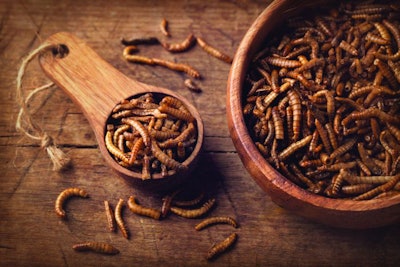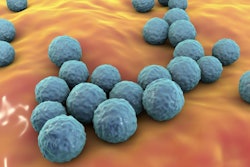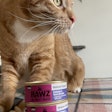
The popularity of insect-based ingredients in Mexico may rise from a mix of ancient culinary traditions and modern trends. While Mexican culture has long embraced edible arthropods, insect farms now produce foods and supplements for dogs and other pets too.
For example, Guanajuato-based Insect Nutrition sells edible-insect products for both humans and pets. On the pet side, items range from dog treats and high-protein dog supplements to conventional dried insects for reptiles, birds and fish. The majority of Insect Nutrition’s products are marketed for human consumption though, exemplifying the convergence of human and pet foods.
Demand has grown consistently on both the human and pet sides, Barbara Vela Maldonado told Petfood Industry from her company’s booth at Foro Mascotas 2022 on June 17 in Guadalajara, Jalisco, Mexico. Marketing their products has broken barriers in the food industry. Two major consumer demand trends, health and sustainability, boost the growing popularity of crickets, black soldier fly larvae and other insects in human and pet food.
On the health side, insects can provide complete proteins along with fiber and a range of vitamins. People have eaten insects throughout history, and Mexico retains this tradition. These insect delicacies include gusanos de maguey (cactus worms), huevos de hormiga (ant eggs) and chapulines (crickets/ grasshoppers). For example, La Tequila, a restaurant in Guadalajara, serves quesadillas made with chapulines. In that dish, the morita pepper sauce dominates over the mild, nutty flavor of the insects.
The fiber and other components of insect-based ingredients may benefit guy bacteria, Alma Vela Maldonado said. People are more aware of their own gut microbiome as well as that of their pets. The gut-brain axis has become a topic of discussion, and insects fit into that conversation. Insect Nutrition markets cricket and black soldier fly larvae as superfoods.
Sustainability of insect farms
Environmentally, the resources used to produce protein from animals affect both the environment and the economy. Insects have potentially much lower resource needs than mammals and poultry. Insects such as crickets and black-soldier fly larvae can live in vertical farms that use less land than ranching or farming. Arthropod agriculture requires an initial investment in infrastructure, but over the life of the farm, the costs may become lower than cattle or poultry. As the pandemic taught us, animals can pass diseases to humans. However, the species used in insect farms don’t carry diseases that can spread to humans or wildlife. Similarly, if they escape into surrounding ecosystems, the bugs cause less havoc than feral hogs or other invasive species. With insects, the whole animal is used, so no leftover hooves and guts. Insects can also survive on feeds that mammals and fish couldn’t handle. Overall, when compared to other animals, insect farms may tends to produce a larger quantity of food from a given quantity of resources.
Concerns about sustainability root in people’s awareness that we all share one habitat, called planet Earth. We breathe air expelled by Amazonian trees and drink water that cycled through dinosaurs’ kidneys. People must manage their consumption since the planet’s capacity is limited. If pet owners want to keep pampering their fur babies in the future, there need to still be enough resources to provide that lifestyle. Protecting natural environments may protect human civilization as well.
While the precise route remains unclear, wildlife likely harbored the original source of the SARS-CoV-2 coronavirus. COVID-19 was not the first disease to jump that fence, nor is it likely to be the last as people further encroach on natural areas where unknown diseases lurk. From the bubonic plague to leprosy, zoonotic diseases have ravaged Homo sapiens since prehistory. The sword cuts both ways, and human diseases can pass to other animals as well.
One Food approach to insect-based pet food ingredients
Recognizing this connection, the Centers for Disease Control, United Nations Food and Agriculture Program and other agencies collaborate in the One Health program. This initiative connects human health to that of other animals, by examining shared threats such as zoonotic diseases.
“One Health issues include everything from zoonotic diseases and antimicrobial resistance to food safety and security and that includes food for people and animals,” Tom Skinner, senior public affairs officer for the CDC told Petfood Industry. “Changes in our interactions with animals, through changes in the environment, travel and trade, and the increase in animals kept as pets, have led to the spread of existing and new zoonotic diseases.
While diseases are one aspect of health, so is nutrition. The human and pet food streams are already converged, with many ingredients appearing in both. So much so that you could write a book about it. For example, Nestle Purina released a cookbook for people, inspired by the ingredients used in a new line of cat recipes, Fancy Feast Petite Feasts.
The connections among disease and human, pet and livestock foods have been established. Yet there is more to health than avoiding disease. Dietary habits and nutrition play roles in health as well. The human and pet food worlds seem to be converging. The growing popularity of insect-based pet foods in Mexico exemplifies this.
















